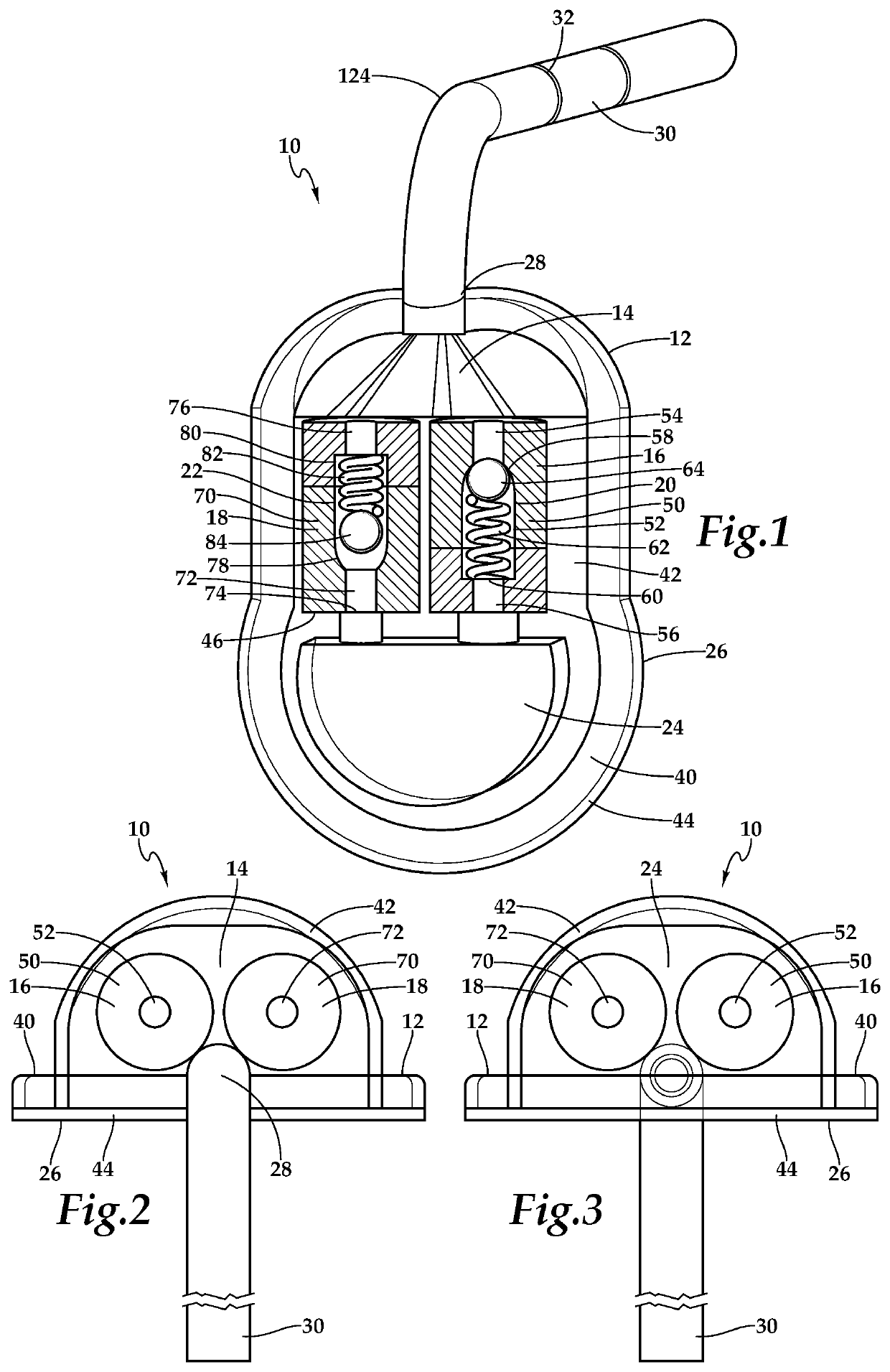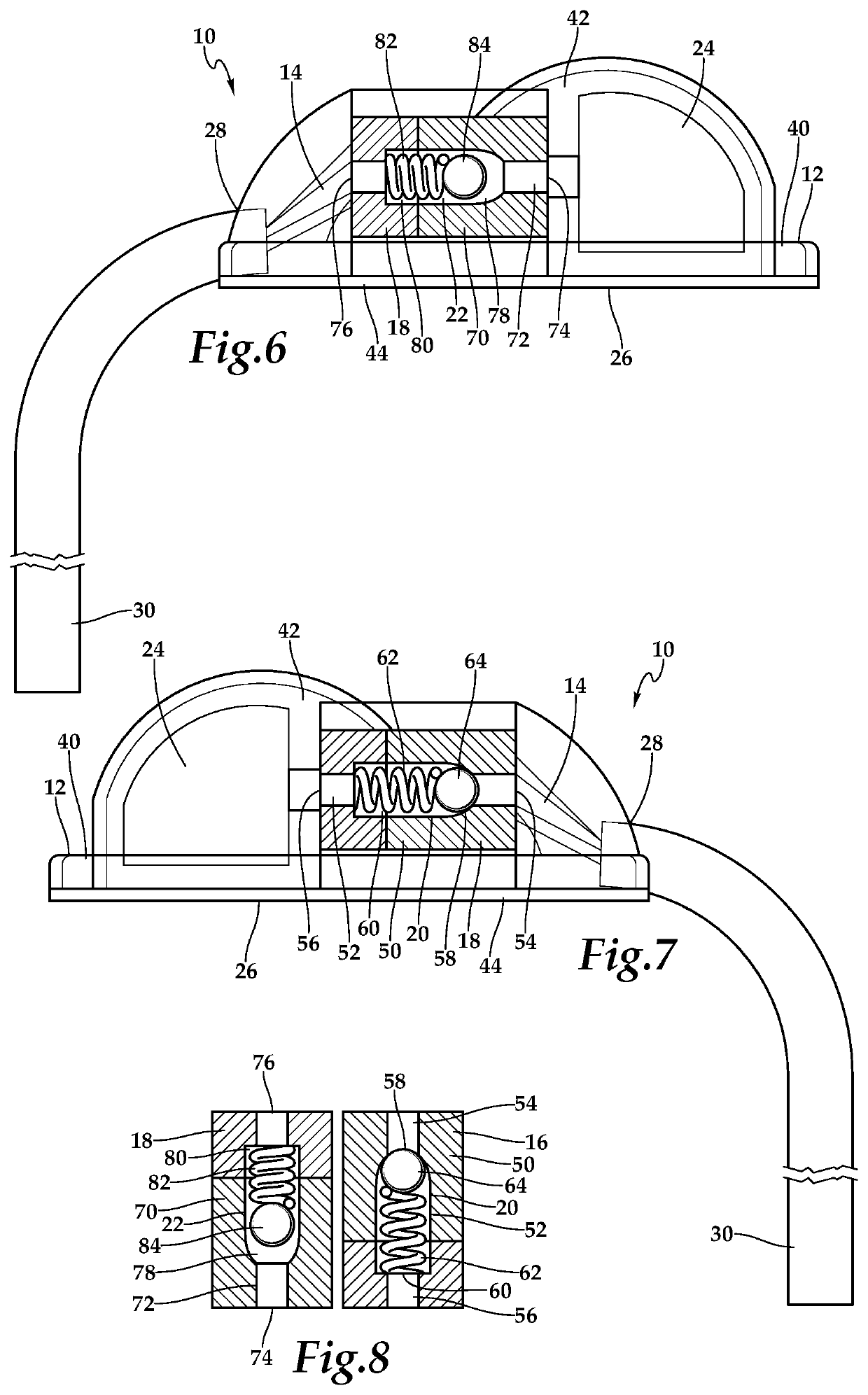Implantable Intracranial Pulse Pressure Modulator and System and Method for Use of Same
a technology of intracranial pulse and modulator, which is applied in the direction of wound drains, valves, medical devices, etc., can solve the problems of csf pathways and flow, physically deforming the brain or obstructing the ventricular system, and perhaps not as efficiently as in normal individuals
- Summary
- Abstract
- Description
- Claims
- Application Information
AI Technical Summary
Benefits of technology
Problems solved by technology
Method used
Image
Examples
Embodiment Construction
[0028]While the making and using of various embodiments of the present invention are discussed in detail below, it should be appreciated that the present invention provides many applicable inventive concepts which can be embodied in a wide variety of specific contexts. The specific embodiments discussed herein are merely illustrative of specific ways to make and use the invention and do not delimit the scope of the present invention.
[0029]Referring initially to FIG. 1 through FIG. 8, therein is depicted one embodiment of an implantable intracranial pulse pressure modulator device (IPPMD) that is schematically illustrated and generally designated 10. As shown, a housing 12 is sized for superjacent contact with a skull S. The housing 12 secures a vestibule 14, a pair of one-way valves 16, 18 exemplarily depicted as passive ball check valves 20, 22, and a chamber 24 therein. Walls of the chamber 24 may be comprised of an elastic material such as silicone that allows the volume of the c...
PUM
 Login to View More
Login to View More Abstract
Description
Claims
Application Information
 Login to View More
Login to View More - R&D
- Intellectual Property
- Life Sciences
- Materials
- Tech Scout
- Unparalleled Data Quality
- Higher Quality Content
- 60% Fewer Hallucinations
Browse by: Latest US Patents, China's latest patents, Technical Efficacy Thesaurus, Application Domain, Technology Topic, Popular Technical Reports.
© 2025 PatSnap. All rights reserved.Legal|Privacy policy|Modern Slavery Act Transparency Statement|Sitemap|About US| Contact US: help@patsnap.com



